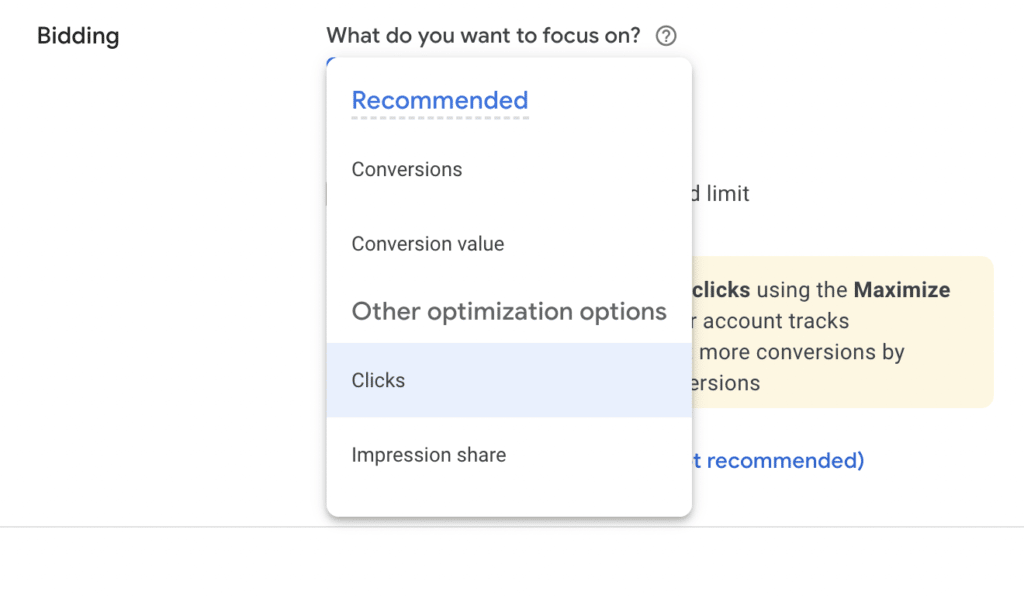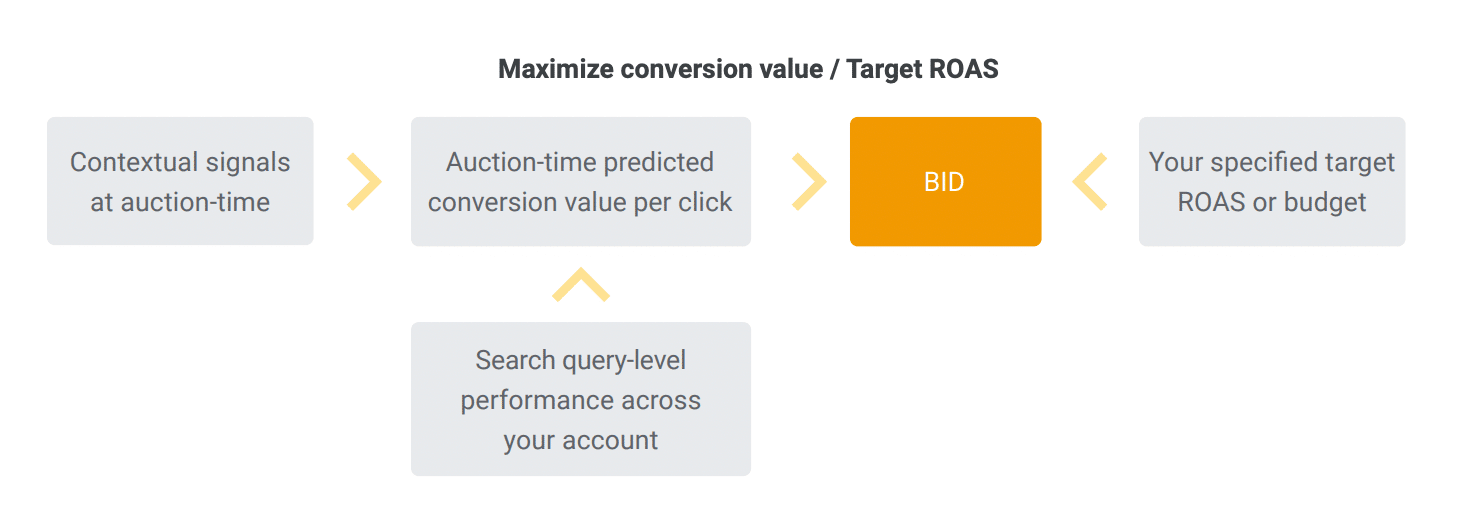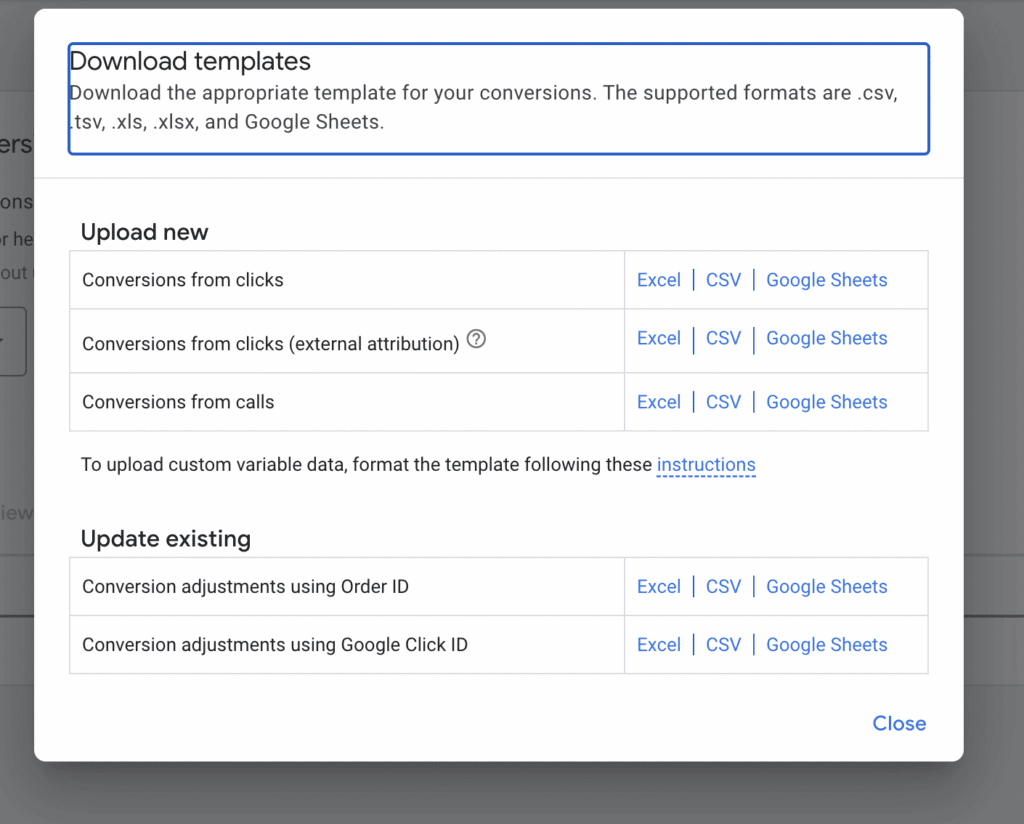Bid management has been an Achilles heel for many digital marketing campaign managers. Bid too much on a keyword, and you’re throwing money out the window. Bid too little, and you miss out on high-value opportunities.
Google has recognized these bid management challenges. Accordingly, they’ve created a suite of automated bidding strategies that make it easy for campaign managers to connect with high-value searchers while not over-bidding on less favorable keywords.
Google says roughly 80% of their advertisers use some form of automated bidding. With six different automated bidding strategies to choose from, advertisers can use automated bidding to reach goals ranging from awareness to conversion, no matter where a user is in the funnel.
One of the more interesting automated bidding options is conversion and conversion value bidding. Formerly known as tCPA and tROAS, conversion bidding is a compelling bidding process. That’s because it removes much of the manual day-to-day bid management and helps campaigns drive higher-value results.
If you want to bid on conversion values, look into platforms for predictive modeling with customer data, such as Pecan AI. These tools can help you generate conversion values that can be fed into your Adwords account.
Let’s dive into conversion value bidding with Google ads and how you as a marketer can drive additional efficiencies with predictive analytics.
What is conversion value bidding?
Conversion value bidding is a Google smart bidding strategy that allows Google to optimize a campaign bid in real time to reach a conversion value in every ad auction you enter. An advertiser can assign a value to a conversion event within this optimization schema. Google will then adjust bids accordingly, using proprietary machine-learning algorithms.
According to Google’s documentation,
This smart bidding strategy [tROAS] analyzes and intelligently predicts the value of a potential conversion every time a user searches for products or services you’re advertising. Then, it automatically adjusts your bids for these searches to maximize your return on them.
The bidding strategy will adjust bids in real time to align with what’s predicted to deliver the highest conversion value. If Google predicts a keyword will deliver a higher conversion value, it will bid more aggressively for you to win the auction. If it predicts the keyword will deliver a low conversion value, it will bid less on the keyword to ensure it will reach the desired return on ad spend for a campaign.
Recent changes to conversion value bidding
In early 2022, Google made a few changes to the tROAS, tucking it under the umbrella of “maximize conversion” or “maximize conversion value” bidding strategy for search campaigns. Within the campaign settings, a campaign manager can assign a conversion bidding strategy, with the option to include a target cost per action or a target return on ad spend (ROAS) value.
Maximize conversions = option for target CPA
Maximize conversion = option target ROAS
With these parameters in place, Google will maximize the conversion value (or CPA) of a campaign given the campaign budget parameters.

How does it work?
Before we get into some background on Google bidding strategy, you’ll need to do some homework if you’re looking to run conversion value campaigns.
First, you’ll need to update your Google Tag Manager (GTM) with conversion value tracking or transaction ID tracking.
Additionally, depending on your business type, you may need to consult your website developer to update the data layer or Javascript within your GTM to pull in the correct value of a conversion properly.
Once you’re collecting conversion value data, you can start running ad campaigns that are optimized to conversion values.
The conversion value bid strategy relies on three elements to direct bids and drive performance. Google will put in contextual signals, query-level performance from the account, and a predicted conversion value. Google calculates these three factors and properly adjusts the bid to drive your ROAS goal.

What contextual signals does Google examine?
According to documentation, Google will analyze 11 signals for bid adjustments to help maximize conversion value for your campaigns.
- Device
- Location
- Time of day/day of week
- Lists (Audience Lists)
- Actual query
- Ad creative
- Interface language
- Browser
- OS
- Search partner network
- Mobile app ratings/review
As the campaign manager designs campaigns and sets the conversion value, they can take a hands-on approach to control the target return or the target cost per action that a campaign needs to reach. Google will then adjust bids in real time to better promote your brand to searchers who it thinks will deliver the best results for your campaign.
The value of conversion value bidding
Google’s AI is designed to put the power of algorithmic bidding in the hands of the campaign manager. In so doing, they’ve taken much of the busywork around optimization, management, and adjusting bids off the campaign manager’s plate. Instead, it’s in the ‘hands’ of the machine learning algorithm.
This change can free up the campaign manager to work on two core areas of a campaign:
Campaign creative and landing page performance
Campaign managers can spend more time focused on ad copy and landing page adjustments. Additional time spent on creative can help brands stand out among the ad auctions and landing pages to perform better.
Adjusting conversion values
Campaign managers need to take an active role in getting the most out of their conversion value optimization schemas. This task is where platforms like Pecan AI fit in. Pecan is a predictive analytics platform that allows campaign managers to model customer lifetime value and feed predicted LTV values into Google.
How can predictive analytics drive higher conversion value?
With predictive analytics, campaign managers can model the conversion events on longer-term customer value earlier in the campaign lifecycle. They then can feed predictive values back into the conversion upload portal in Adwords.
This approach allows Adwords to bid more aggressively on keywords, audiences, etc., likely to drive higher lifetime value.

Want to learn more about how predictive analytics can support your marketing campaigns? Get in touch to learn how Pecan can help you maximize the impact of your ad spend across all your marketing channels.